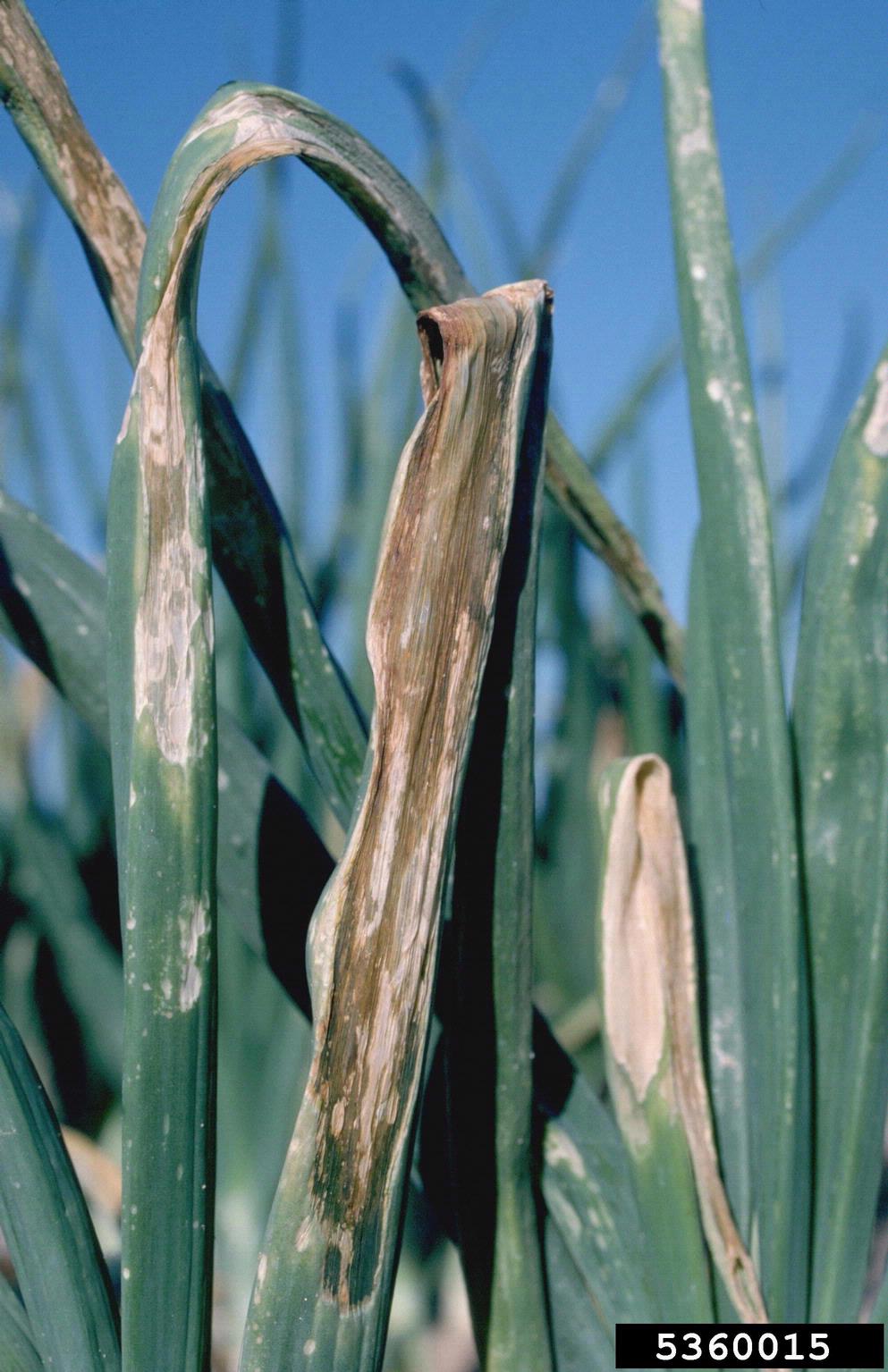Tip Burn In Onions : What Causes Onion Tip Blight


Ah, the noble onion. Few of our favorite dishes would be quite as good without it. For the most part, these alliums are easy to grow and have few pests or problems; however, tip blight in onions is a potential threat to yields. What causes onion tip blight? It may be a naturally occurring process in mature plants, but in young plants, it may indicate a nutritional deficiency or a fungal issue. The problem may also be cultural. Read on to answer the question, "Why are my onions' tips burnt?", and find some preventatives and solutions.
What Causes Onion Tip Blight?
Wind, sun stress, excess soil salts, and other environmental factors can cause onion tip burn. There may also be soil pathogens or even a lack of an important nutrient. Given all the potential causes of browning, dry tip foliage, it can be hard to decide what is affecting the plant. The first thing to do is decide if the correct cultivation and site conditions are being met. If that is the case, the issue may have to do with a fungus. Vetting the causes of plant problems can be vexing. In many cases, you just need to look at the soil and your planting procedures. Onions need well-draining soil, lots of sun, good spacing, and plenty of nitrogen and phosphorus. In high heat, full sun locations, it is not uncommon to see tips burn; however, providing shade does little to reduce the incidence of tip burn in onions. Providing the necessary nitrogen may increase the salt levels in soil, causing brown tips. A soil test is beneficial to see what macro and micro-nutrients are present in the soil since too much nitrogen can cause the problem but too little phosphorus can too.
Insects and Onion Tip Burn
Once you are sure your soil and growing conditions are favorable, finding out what causes onion tip blight may be right under your nose. Moisture stress may be encouraging thrips, tiny cigar-shaped larvae, or the adults, slightly larger, winged, and dark-colored. They feed on plant sap from the leaves and their behavior can cause discolored leaf tips. Temperatures higher than 80 degrees Fahrenheit (30 C.) seem to encourage thrip presence. Leaf miner damage also encourages tip burn in onions. Use organic pesticides, such as neem oil, to combat these tiny pests. Both are more prevalent in early season crops, crowded stands, and failure to rotate crops.
Fungal Tip Blight on Onions
Tip blight on onions is a named disease that stems from fungi. Fusarium is just one fungus that starts out in the leaf tips, causing them to brown and wilt. Eventually, the disease progresses into the bulb. It is a soil-borne fungus. Botrytis causes foliar damage as well. It produces necrotic lesions that develop into tip burn and blight. Both fungi are present in high humidity and plenty of moisture. Extreme heat seems to minimize the presence but temperatures below 80 degrees Fahrenheit (30 C.) seem to encourage their activity. Sulfur sprays early in the season can help prevent damage from many fungal problems.
Gardening tips, videos, info and more delivered right to your inbox!
Sign up for the Gardening Know How newsletter today and receive a free copy of our e-book "How to Grow Delicious Tomatoes".

Bonnie Grant is a professional landscaper with a Certification in Urban Gardening. She has been gardening and writing for 15 years. A former professional chef, she has a passion for edible landscaping.
-
 10 Common Composting Problems That Can Spoil Your Garden Gold – Plus Easy Fixes
10 Common Composting Problems That Can Spoil Your Garden Gold – Plus Easy FixesLearn how to troubleshoot common composting issues before they ruin your stash – from bad smells and bugs to materials not breaking down as they should.
By Susan Albert
-
 Terrifically Tubular Flowers For Hummingbirds: 9 Tube-Flowered Plants To Attract Hummers
Terrifically Tubular Flowers For Hummingbirds: 9 Tube-Flowered Plants To Attract HummersGrowing tubular flowers for hummingbirds helps you create the optimum feeding conditions for your winged friends. Here are nine tubed delights for hummers
By Tonya Barnett